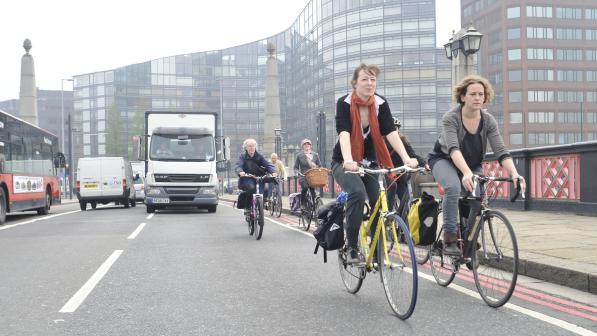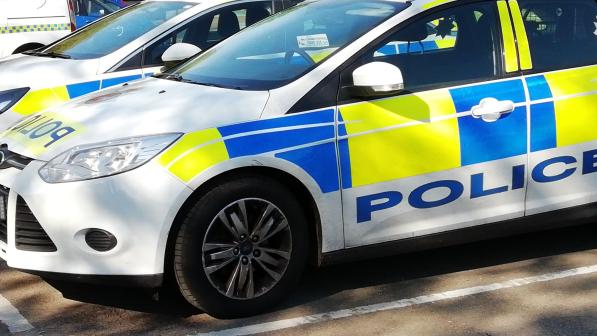What should the police do to improve the way they handle collisions involving cyclists?

Reporting serious injury collisions to the Crown Prosecution Service (CPS)
In theory, the police in England and Wales must refer all fatal road traffic cases to the Crown Prosecution Service (CPS) for a charging decision.[1]
They are, however, authorised to make a charging decision in the case of:
- Any ‘summary only[2] offence (including careless driving, drink-driving, driving whilst disqualified, without a licence or without insurance); and
- Any ‘either way’[3] offence anticipated as a guilty plea and suitable for sentence in the magistrates’ court (this could, potentially, include cases of dangerous driving).
By implication, therefore, the police are not required to report cases of non-fatal driving to the CPS if they believe them to be ‘careless’ or not culpable at all, even when very serious injuries are involved.
It is not clear how big a problem this is, but there are concerns that it leads to a significant number of reported collisions resulting in little or no action.
Each police force is of course independent, and some take a tougher approach than others, but a widespread failure to take further action in so many cases means that too few incidents of unlawful driving are effectively penalised and prosecution is weakened as a deterrent. Moreover, the lack of a resulting criminal record means that repeat offenders can easily go undetected.
Accountability and transparency
Accountability presents another problem:
- If a driver is not charged, the injured victim or their bereaved family is often left unclear about who took the decision and why. This makes challenging a decision very difficult.
- There are no data available to explain how, why or by whom such decisions are made, either for individual police forces, CPS areas or for the system as a whole.
Consequently, Cycling UK believes that police and prosecutors should be required to justify their charging decisions, and data about these decisions should be systematically collected in the interests of transparency and accountability.
Such information could then be used to help identify scope for improvements, e.g. the need for more resources; better training on investigation procedures to ensure that there is enough evidence to make a case worth referring to the CPS; and best practice reporting systems etc.
The need for this is particularly acute because roads policing is missing from the annual PEEL assessment (police effectiveness, efficiency, and legitimacy) criteria used by Her Majesty’s Inspectorate of Constabulary (HMIC) when reporting on the performance of police forces.
It would, of course, make sense to include roads policing in PEEL too, a move Cycling UK, RoadPeace and other groups representing vulnerable road users called for when the HMIC consulted on its inspection framework. The All Party Parliamentary Cycling Group’s (APPCG) recommends this as well in their report on ‘Cycling and the Justice System’ (May 2017, recommendation 4).
Need for research into police handling of collisions or ‘near misses’
We know from the findings of the Near Miss Project that ‘near misses’ and ‘scary’ incidents can put people off cycling. It is thus crucial for cycle safety and cycling that all reports of seriously bad or aggressive driving are properly investigated, whether someone is injured or not.
The importance of this, and the substantial variation between police forces in the way reports of near misses are handled, has been recognised by the Transport Select Committee (TSC). In a 2016 report on an inquiry at which Cycling UK gave both written and oral evidence, they said:
"The vulnerability of cyclists provides a particular road enforcement challenge. A “near miss” involving a cyclist can be close to a fatal accident, and “near miss” reports involving cyclists should be considered in that light."
- "It is clear that there is a problem with the actual and subjective safety of the roads for cyclists, as well as the perception of the likely result of reporting offences to the police."
- "The level to which cyclists feel unsafe on the roads due to a perceived failure to enforce traffic law is at odds with the Government’s aim to promote cycling, and must be addressed."
- “We recommend that the Government’s strategy should not only promote cycle use, but must do so whilst reducing the proportion of people who consider that it is too dangerous for them to cycle on the roads."
- “There appears to be substantial feeling that collisions or near misses involving cyclists are sometimes not effectively handled."
- "More generally, there is great variation between police forces in how a road user is able to report near misses, and the development of best practice would be of benefit to all road users."
- "We recommend that the Home Office commission research on how collisions or near misses are handled by the police, particularly how this varies between each force area, and how this impacts the proportion of people who believe it is too dangerous to cycle on the roads.”
In the two years since the publication of the TSC’s report, no steps appear to have been taken to implement this recommendation. Cycling UK now urges the Home Office to do so.
Professional guidance for the police
The College of Policing’ issues professional guidance on how to investigate fatal and serious injury road collisions.
Recently, it has become much clearer from the title that it is not intended to cover investigating fatalities alone, but serious injuries as well. This is a welcome advance, but Cycling UK still believes that it needs to emphasise that the instructions apply not only in cases of ‘life changing’ collisions, but when serious injuries occur too.
After all, vulnerable road users are susceptible to serious injuries, and investigating collisions involving them carefully and consistently is important for road safety and justice. Indeed, some serious injuries might prove ‘life changing’ in the event, although this may not be immediately apparent.
Moreover, cyclists may have to depend almost entirely on the police to find out what happened to them – if they've been hit from behind, for example, and/or suffer amnesia afterwards, etc.
Cycling UK recommends extending the guidance, and changing the name to ‘Investigating Road Crashes’ to help ensure that it is always followed for non-fatal injuries.
Some common problems with the way the police investigate collisions
Not investigating a serious injury case as carefully as a fatal incident
Not investigating fatal injuries adequately, due to the initial belief that the victim would not die
Not gathering evidence at the scene of the collision, or promptly afterwards, either from the driver, the victim(s) or other witnesses
Not investigating potential ancillary offences, e.g. mobile phone use or defective eyesight
Not following up witnesses who provided contact details at the scene, and not calling on them to give evidence in court
Relying so heavily on the presence of witnesses at the scene and their statements that they set too little store on other forms of evidence, e.g. CCTV /dash, helmet or bike cam footage, or the results of a site examination
Camera evidence
Unfortunately, many forces haven't developed online reporting systems of their own to allow cyclists to submit headcam/handlebar video footage of ‘near miss’ or other incidents, or for drivers to submit dash-cam footage.
Amongst the forces that have taken the initiative, reporting requirements have tended to vary in terms of evidence, length of recording etc.
Essentially, each force has been ploughing its own furrow.
The Transport Select Committee noted this with some concern in its report on traffic law and enforcement (2016), as did the All Party Parliamentary Cycling Group (APPCG) in 2017:
All police forces should ensure that evidence of common offences submitted by cyclists, or other witnesses, using bike or person mounted cameras or smart phones is put to use, and not ignored.
APPCG
Solutions
Given the resource constraints on police forces, the falling number of traffic officers, and the closure of many local police stations, online reporting makes the best sense.
Without this, non-injury or slight injury cases are unlikely to be reported on any scale, let alone investigated.
Operation SNAP
The four Welsh police forces have adopted a joined-up approach, rolling out ‘Operation SNAP’ across Wales. This offers a single online portal and common system for reporting incidents of bad driving and submitting video evidence.
The National Dash Cam Safety Portal
Since the launch of Operation SNAP, Cycling UK has supported the introduction of an online portal set up by dash camera manufacturer Nextbase. Again, this provides a single point for cyclists and drivers to report serious road incidents captured on bike, helmet or dash cams.
Several forces in England have now subscribed to the portal, but to ensure that everyone, police and users alike, are using a standardised and efficient system, Cycling UK wants to see both the Home Office and NPCC to encourage them to do so.
Proactive enforcement/education operations
Police forces should be encouraged to adopt operations combining enforcement and education to promote safety for vulnerable road users.
These form a winning partnership, a fact well-demonstrated by West Midlands Police’s ‘Operation Close Pass’ targeted at drivers who overtake cyclists too closely. See our Too Close for Comfort campaign for more.
[1] The circumstances in which the police may make a charging decision are set out in The Director's Guidance on Charging 2013. 5th edition, May 2013 (revised arrangements). Guidance to Police Officers and Crown Prosecutors Issued by the Director of Public Prosecution under S37A of the Police and Criminal Evidence Act 1984. (CPS).
[2] ‘Summary only’ offences are tried in a Magistrate’s Court (or possibly a ‘Traffic Court’), where there is no jury.
[3] An ‘either way’ offence is triable either in a Magistrate’s Court (with no jury) or in the Crown Court (with jury).








